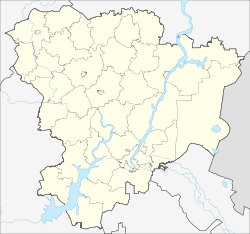포스파티딜이노시톨N-아세틸글루코사미닐전달효소 서브유닛H 는 PIGH [5] [6] 효소 이다.PIGH 유전자는 사람의 염색체 14의 역사선에 위치하고 TMEM229B 와 [7]
이 유전자는 글리코실포스파티딜이노시톨(GPI)-앵커 생합성에 관여하는 소포체 관련 단백질을 코드한다. GPI 앵커는 많은 혈액 세포에서 발견되는 당지질이며 세포 표면에 단백질을 고정시키는 역할을 합니다. 이 유전자에 의해 코드된 단백질은 GPI N-아세틸글루코사미닐(GlcNAc) 전이효소의 서브유닛으로, GlcNAc를 소포체 [6]
상호 작용 PIGH는 [8] PIGQ 와 상호작용하는 것 으로 나타났습니다.
레퍼런스 ^ a b c GRCh38: 앙상블 릴리즈 89: ENSG00000100564 - 앙상블 , 2017년 5월^ a b c GRCm38: 앙상블 릴리즈 89: ENSMUSG000021120 - 앙상블 , 2017년 5월^ "Human PubMed Reference:" . National Center for Biotechnology Information, U.S. National Library of Medicine .^ "Mouse PubMed Reference:" . National Center for Biotechnology Information, U.S. National Library of Medicine .^ Ware RE, Howard TA, Kamitani T, Change HM, Yeh ET, Seldin MF (Jul 1994). "Chromosomal assignment of genes involved in glycosylphosphatidylinositol anchor biosynthesis: implications for the pathogenesis of paroxysmal nocturnal hemoglobinuria" . Blood . 83 (12): 3753–7. doi :10.1182/blood.V83.12.3753.3753 PMID 8204896 . ^ a b "Entrez Gene: PIGH phosphatidylinositol glycan anchor biosynthesis, class H" .^ "AceView: Homo sapiens gene PIGH" . AceView . National Library of Medicine. Retrieved 24 April 2011 .^ Watanabe, R; Inoue N; Westfall B; Taron C H; Orlean P; Takeda J; Kinoshita T (Feb 1998). "The first step of glycosylphosphatidylinositol biosynthesis is mediated by a complex of PIG-A, PIG-H, PIG-C and GPI1" . EMBO J . ENGLAND. 17 (4): 877–85. doi :10.1093/emboj/17.4.877 . ISSN 0261-4189 . PMC 1170437 PMID 9463366 .
추가 정보 Rual JF, Venkatesan K, Hao T, et al. (2005). "Towards a proteome-scale map of the human protein-protein interaction network". Nature . 437 (7062): 1173–8. Bibcode :2005Natur.437.1173R . doi :10.1038/nature04209 . PMID 16189514 . S2CID 4427026 . Gerhard DS, Wagner L, Feingold EA, et al. (2004). "The Status, Quality, and Expansion of the NIH Full-Length cDNA Project: The Mammalian Gene Collection (MGC)" . Genome Res . 14 (10B): 2121–7. doi :10.1101/gr.2596504 . PMC 528928 PMID 15489334 . Suzuki Y, Yamashita R, Shirota M, et al. (2004). "Sequence Comparison of Human and Mouse Genes Reveals a Homologous Block Structure in the Promoter Regions" . Genome Res . 14 (9): 1711–8. doi :10.1101/gr.2435604 . PMC 515316 PMID 15342556 . Strausberg RL, Feingold EA, Grouse LH, et al. (2003). "Generation and initial analysis of more than 15,000 full-length human and mouse cDNA sequences" . Proc. Natl. Acad. Sci. U.S.A . 99 (26): 16899–903. Bibcode :2002PNAS...9916899M . doi :10.1073/pnas.242603899 PMC 139241 PMID 12477932 . Watanabe R, Inoue N, Westfall B, et al. (1998). "The first step of glycosylphosphatidylinositol biosynthesis is mediated by a complex of PIG-A, PIG-H, PIG-C and GPI1" . EMBO J . 17 (4): 877–85. doi :10.1093/emboj/17.4.877 . PMC 1170437 PMID 9463366 . Watanabe R, Kinoshita T, Masaki R, et al. (1996). "PIG-A and PIG-H, which participate in glycosylphosphatidylinositol anchor biosynthesis, form a protein complex in the endoplasmic reticulum" . J. Biol. Chem . 271 (43): 26868–75. doi :10.1074/jbc.271.43.26868 PMID 8900170 . Kamitani T, Chang HM, Rollins C, et al. (1993). "Correction of the class H defect in glycosylphosphatidylinositol anchor biosynthesis in Ltk- cells by a human cDNA clone" . J. Biol. Chem . 268 (28): 20733–6. doi :10.1016/S0021-9258(19)36842-5 PMID 8407896 .







